Seymour - Australian Light Horse Memorial Park

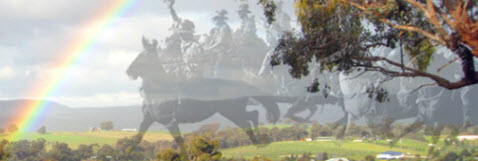
The Australian Light Horse Memorial Park in Seymour, is situated in a very beautiful rural environment.
Just one kilometre along the Goulburn Valley Highway on the eastern side of Seymour, you will come see the stone gateway that marks the entrance of this historic park.
Map of Site
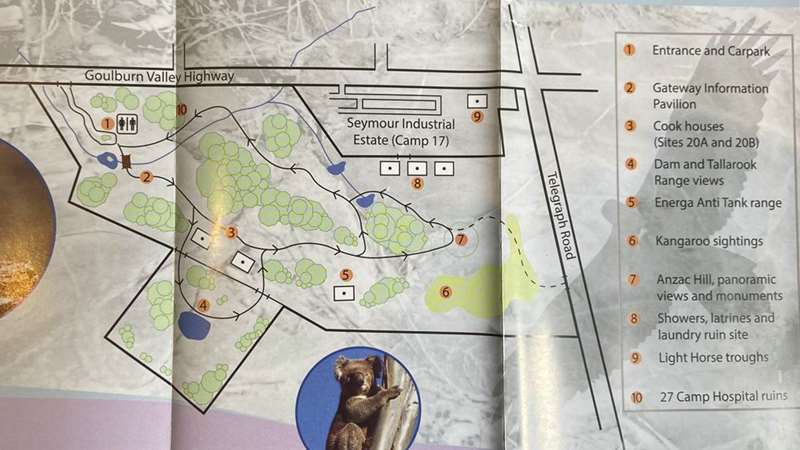
The highest point in the park is ANZAC Hill, which is accessible by walking the tracks. It offers lovely 360 degree views of an idyllic Australian landscape. To the South is the Tallarook Range, and to the East, the National Trust listed Trawool Valley. Mt Puckapunyal is visible in the West.
The Waler Paddock offers stunning vistas the Tallarook Range, and is beloved by those seeking a quiet retreat and time to reflect. It is a short walk from the car park, across the creek and past the information gateway.
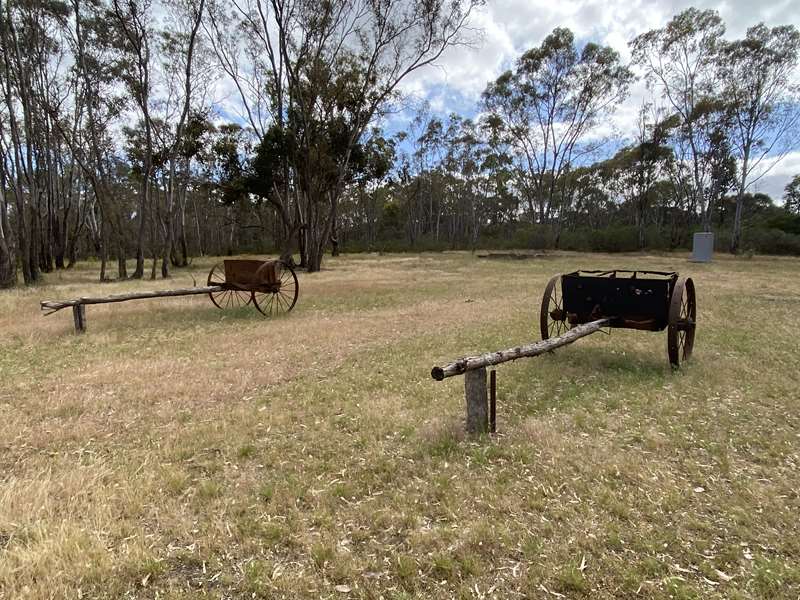
An Exciting History
The park covers 150 hectares and is part of the land which was Victoria's largest Army base, the Seymour Camp, known to many as Site 17. It has a history going back to 1887, when the Seymour troop of the Victorian Mounted Rifles (VMR) was formed. The horses were even brought from distant places by train, jumped from their special carriages and taken out to the camp for training. After the Federation of Australia in 1901, the VMR became part of the newly formed Australian Light Horse .The Light Horse was a foundation of the Australian Army.
Accommodations were always in tents, though there were cookhouses and toilet blocks. During the Second World War, the camp was fully sewered. Many relics of those times are found throughout the park including the foundations of 27 Camp Hospital, a grenade range, foxholes, and trenches which were dug to divert water away from tents. At the top of Light Horse Drive in the adjoining Industrial Estate, you can see original horse troughs believed to date back to the early part of the last century.
Gateway Information Pavilion
The beautiful information pavilion, the gateway to the park, is located just across the footbridge near the carpark. There you will find the story of the park and its remarkable people, its importance to the history of Seymour and indeed Australia. As well there is a detailed map which gives an idea of the extent of the park.
Those who Served
During World War 2, many thousands of men and women passed through the camp as part of their training. A commemorative wall displays plaques dedicated to some of those units who served.
The Camp had an impact on countless lives including legendary figures like Weary Dunlop who was a cadet there, and heroic Tom (Diver) Derrick, VC, who was later killed at Tarakan. Reg Saunders, the first aboriginal officer in the Australian Army received his commission at Site 17.
Explore the relics
Throughout the park there are scattered relics of the Army Camp days. As all accommodation was under tents, the only structures were ablutions blocks, cook houses, and administrative buildings. The foundations of 27 Camp hospital are still there. With a bit of imagination you can envision the purpose of the foundations that are all that remain, and picture the busy camp life that once existed here. Take care when exploring the relics.
Anzac Hill
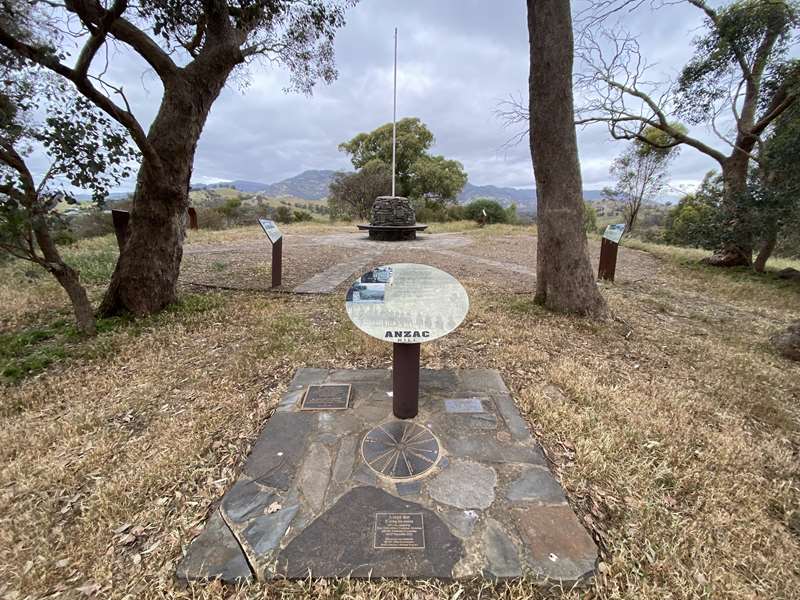
Anzac Hill is the highest point in the park. It offers 360 degree panoramic views of the beautiful surrounding countryside. It is well worth the easy walk to the top. Explore the park, imagine the busy camp life as you find the relics, experience the sense of quiet and peace that now pervades the park. Picnic seats are located at the top.
Information Panels at Anzac Hill
The 'Seymour Racecourse - Kitchener Camp
In January 1910, more than 4000 troops and 2000 horses gathered at the Racecourse for the Seymour visit of the British Lord Kitchener who was invited to advise the Australian Government on defence matters. Bullock teams hauled field guns from the station to the camp.
A triumphal arch was erected across the Yea Road (now Anzac Avenue) to welcome the famous visitor. The town was abuzz with excitement, After two days Kitchener departed, his visit a major catalyst in the choice of Seymour as an Army Camp in World War I.
Lae and Finschhafen, New Guinea
833 days had elapsed since the 9th Division's 2/12 Australian Field Regiment embarked from Adelaide on November 17, 1940 for notable battles at Tobruk and El Alamein. In sight of a sunburnt land, the smell of gum trees and a leave pass, excitement mounted for a March 2, 1943 landing and heroes' welcome home.
Following just 21 days of leave, the Victorian members of the 2/12 reluctantly returned to Seymour Camp where the orderly room became busy with 140 charges per week being laid - mostly for AWLs. With a minimum of delay the unit entrained to Atherton, North Queensland, for jungle training.
By September 1943, the fifth year of war had begun and the Australian 9th Division, the legendary "Rats of Tobruk", were deployed to the New Guinea campaign. Lae, a major port with 11,300 Japanese troops in the vicinity, became a battle ground, After fierce fighting in difficult jungle conditions, the 7th and 9th Divisions prevailed and all Japanese had withdrawn by September 16.
With Lae in Australian hands, General Douglas MacArthur sought the capture of Finschhafen, The 9th Division was ordered to take the Huon Peninsula and after 11 days of battle Finschhafen was captured, then soon after, Sattelberg Mountain fell.
By January 1944 the first jungle campaign of the "Rats of Tobruk" was over. The Division had lost 1000 men and was exhausted. Among those who returned after five years of war was the 2/12's Murray Smith, first president of the Committee which established this park.
Port Lewis, Washington, USA
The US 41st Infantry Division came to Seymour from their base in Fort Lewis in 1942. The Division of over 15,000 GIs lived and trained in and around Seymour Camp before moving north to fight the Japanese in Papua, Dutch New Guinea and the Southern Philippines.
Known as the Sunset Division and the Jungleers, they were the first unit to leave the United States during the Second World War and would be among the last to return home. Their impact on Victoria was strong and positive, providing much-needed reassurance at a time when Australians were in genuine fear of invasion.
Kitchener Hill
When the British Military Commander Kitchener visited Seymour in 1910, he watched troops manoeuvre and train in the hills to the east of here. Rifle training was conducted and the remains of the targets and rifle butts are still to be seen to this day.
His visit was of major importance to Seymour as this area was chosen as the location for a large, permanent military camp.
Rokeby, Goulburn Valley, Tallarook
During World War II, Rokeby across the river from here was one of several camps in the Goulburn Valley. It was home of the 1000 strong 2/22 Infantry Battalion. They ware to be known as the Lark Force.
In his book 'Darkest Hour' Bruce Gamble wrote: There was a wild beauty to the rugged open countryside but the days were cold and damp with frequent winter rains, and at night the recruits shivered in their tents because there weren't enough woollen blankets to go around.
In April 1941 the Lark Force was sent to the intense tropical area of Rabaul in New Guinea to defend Australia from the rapidly advancing enemy poorly supplied and faced with a vastly superior force, they were quickly overcome. They were to endure the horror of captivity by the Japanese. Many would not survive the Tol Pantation Massacre and the sinking of the hell ship "Montevideo Maru".
The Nek, Gallipoli, Turkey
Among the many Light horsemen who camped and trained at Seymour during the Great War of 1914-18 were some of those who took part in the infamous charge at "The Nek" on 7 August 1915. Three waves were ordered to charge Turkish machine-guns with no hope of success. They were cut down on a battlefield not much bigger than the area where you now stand.
For many Australians, the Nek has come to stand for the futile waste of a generation. For others it embodies their legendary spirit of mateship and courage.
Messines, Western Front, Belgium
This 1000 strong 37th Battalion of the Australian Imperial Force was formed in Seymour in 1916 and was known as "Seymour's Own".
Following intense training here in Seymour Camp, and later on Salisbury Plain in England under Major General John Monash, their first big action was the battle of Messines Ridge in June 1917, as part of the 3rd Australian Division. Captain Robert Grieve, beloved by his men, was awarded the Victoria Cross for his daring actions in this battle.
The 37th Battalion went on to fight elsewhere on the Western Front with courage, determination and the intense bonds of friendship. in 1918, following the battle of St Quentin Canal, they were finally disbanded, with a remaining strength of just 90 men.
Broadmeadows Camp
Broadmeadows Camp was the other major military camp in Victoria during the Great War. The vast majority of Victorian troops trained at Broadmeadows or Seymour before departing for overseas.
Seymour became the principal training ground in 1915 following outbreaks of infectious disease at Broadmeadows.
Airmen's Memorial
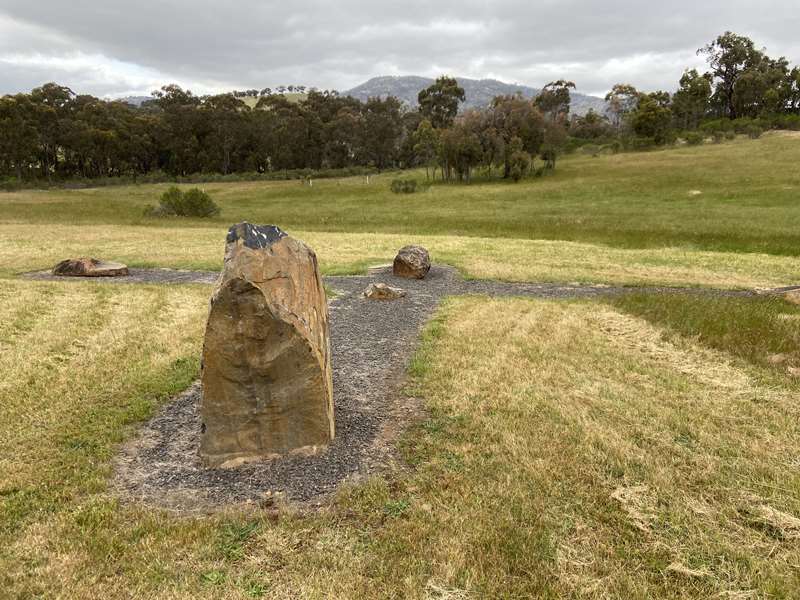
In memory of John Yourn, of Moonee Ponds and Hiram Scouller of Hamilton. Killed on this site in 1931 while carrying out dive bombing practice in a Westland Wapiti A5-20 aircraft.
A man came to the front door. I was three years old. I looked up at him. He was dressed in black and had shiny buttons and had a tall black hat on. He asked if my mother was home. She was down the hallway and called her to the door and stood behind her. The policeman told her the bad news. Mum turned and told me: "Mary you no longer have a daddy".
Metal Year Sculptures With Stories
1916 - The 37th Battalion The 37th Battalion - "Seymour's Own" was formed here in 1916 with 1000 men, including many locals. When they marched through the town in April the "Seymour Express" reported: "There was not a weakling or narrow-chested man among the lot, and the martial bearing and regular tramp of the men indicated that they had been carefully and efficiently trained"
Leaving for overseas in June, local soldier Jim Roberts writing in his diary recalled: "...every man was in good spirits and they sang and cheered along the road".
They sailed for France and were soon in trenches on the Western front. They fought at Messines, Broodseinde Ridge, Passchendaele and the Somme, amongst the bloodiest battles of World War One. Ordered to disband, the men protested, becoming known as "The lndivisibles". Following further action at St Quentin Canal, the battalion disbanded in 1918 with only 90 fighting troops left.
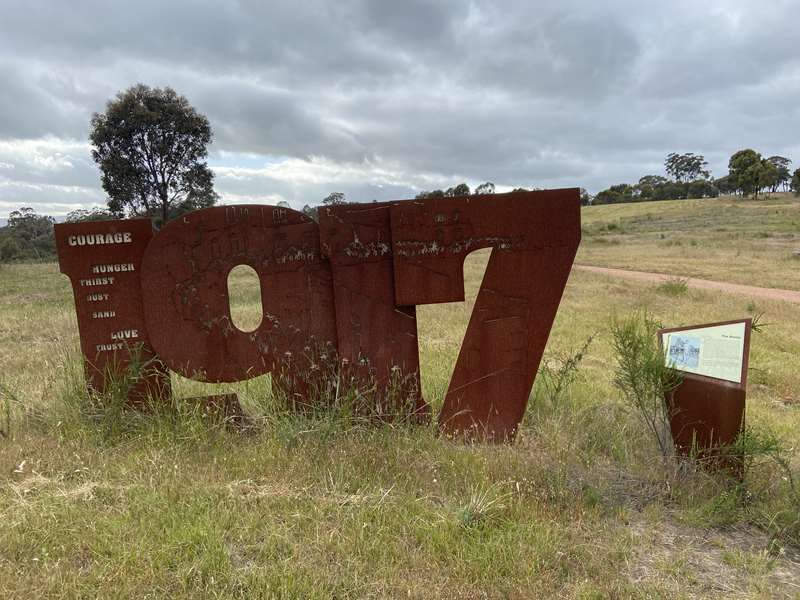
1917 - The Horses The Australian Light Horseman loved his horse, his constant companion, often a real and living link from his old life back home. Together they shared every ordeal. In 1917, in a daring and desperate charge, the Australian Light Horse successfully captured the town of Beersheba, and its all-important wells, which were held by the Turks till that time. At the end of the war, the horses were sold as remounts, or to the locals, or even for human consumption; however some soldiers took the step of shooting their old friend rather than let him fall into cruel hands. Only one horse made it back to Australia to live out a comfortable old age. His name was Sandy He had been the favourite horse of Major General William Bridges who had died from wounds sustained at Gallipoli in 1915.
"They suffered wounds, thirst, hunger and weariness almost beyond endurance and never failed. They did not come home. We will never forget them." From the Memorial to the horses of the Desert Mounted Corps, Sydney.
1844 - The Wallis Hut Pictured near this spot, Mary Wallis (nee Dempsey) stands with two of her nine children. She had married in 1844 without the consent of her father William.
Slab huts were built closely together. Another may be added as required. A wood stove was a dangerous necessity and unfairly it seems both this woman's mother, also called Mary, and her brother John died inconsequence of separate accidents involving a domestic fire.
Conditions were basic, life was simpler and other battles were constantly had with the cold, the wet, the mud, the dry, the heat, the dust, and the wildlife. Hardy souls were raised, and next generation was equipped for their experiences in the Middle East during WW1. Frank and Alfred Wallis (their grandsons) served in 8th Light Horse Regiment, 3rd Brigade in Egypt and Palestine. Alfred wrote in his diary on Thursday 1st November 1917, "Rode up to Beersheba, watered, then camped the day in a waddy. Lived on iron rations Went to the town for a Captain Cook, a pretty place, some fine houses."
Their descendants have contributed greatly to the life of Seymour and this park over many years.
Access for Dogs:
Dogs are permitted on leash.
Review:
A very interesting place to visit with lots of historical elements. well worth a visit.
At the entrance there is a carpark, pond next to a shelter with a table, unshaded table, waterless toilet, large information panel and water tap with bowl. There is also a panel with a QR code which links to a virtual tour of the Park, accessed via your smart phone, which provides information on the history and environmental values of the park. As you approach an area of interest, information will automatically become available to you via your smart phone.
Definitely take the walk to Anzac Hill (1300m one way) which has great views and a memorial. From this point there is a grassy path down the hill (300m) to the Airmen's Memorial. The track back to the carpark passes some shower / latrine block remnants. The track passes a high fence with big barking dogs near the dam which might be very scary to young kids (and even adults if you aren't sure the dogs are not going to get under or over the fence).
At Waler Paddock there was a train carriage (surrounded by a fence) and some old horse carriages.
When we visited in Spring there weren't a lot of colourful wildflowers but plenty of native grasses.
Photos:
Location
Goulburn Valley Highway, Seymour 3660 Map
✆ (03) 5792 1848
Email Enquiry
Web Links
→ lighthorsepark.org.au
→ Military History Trail











